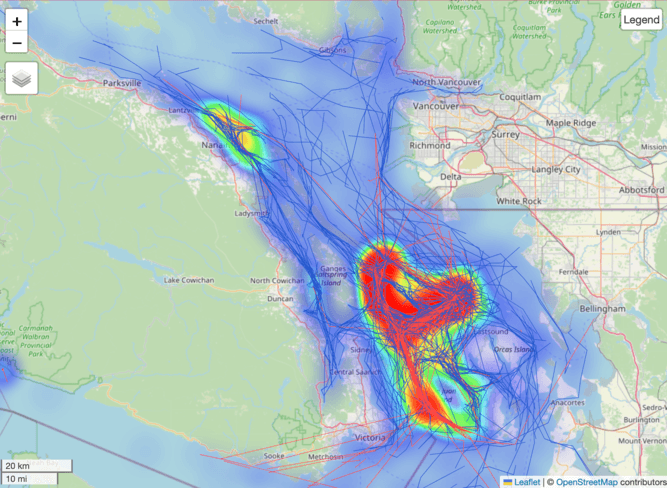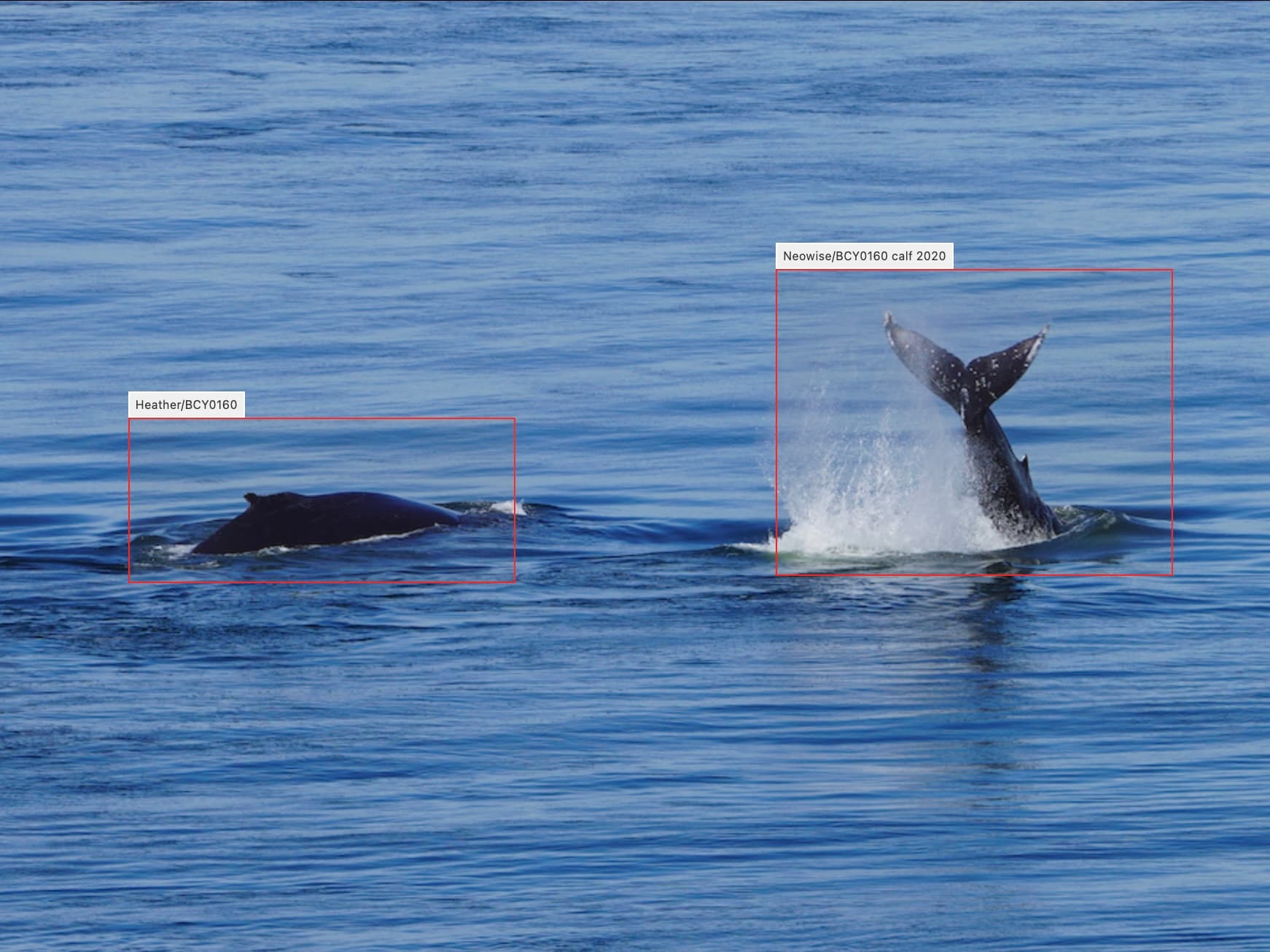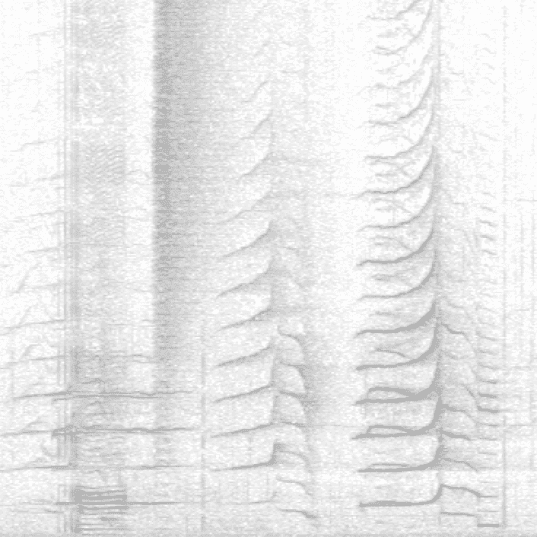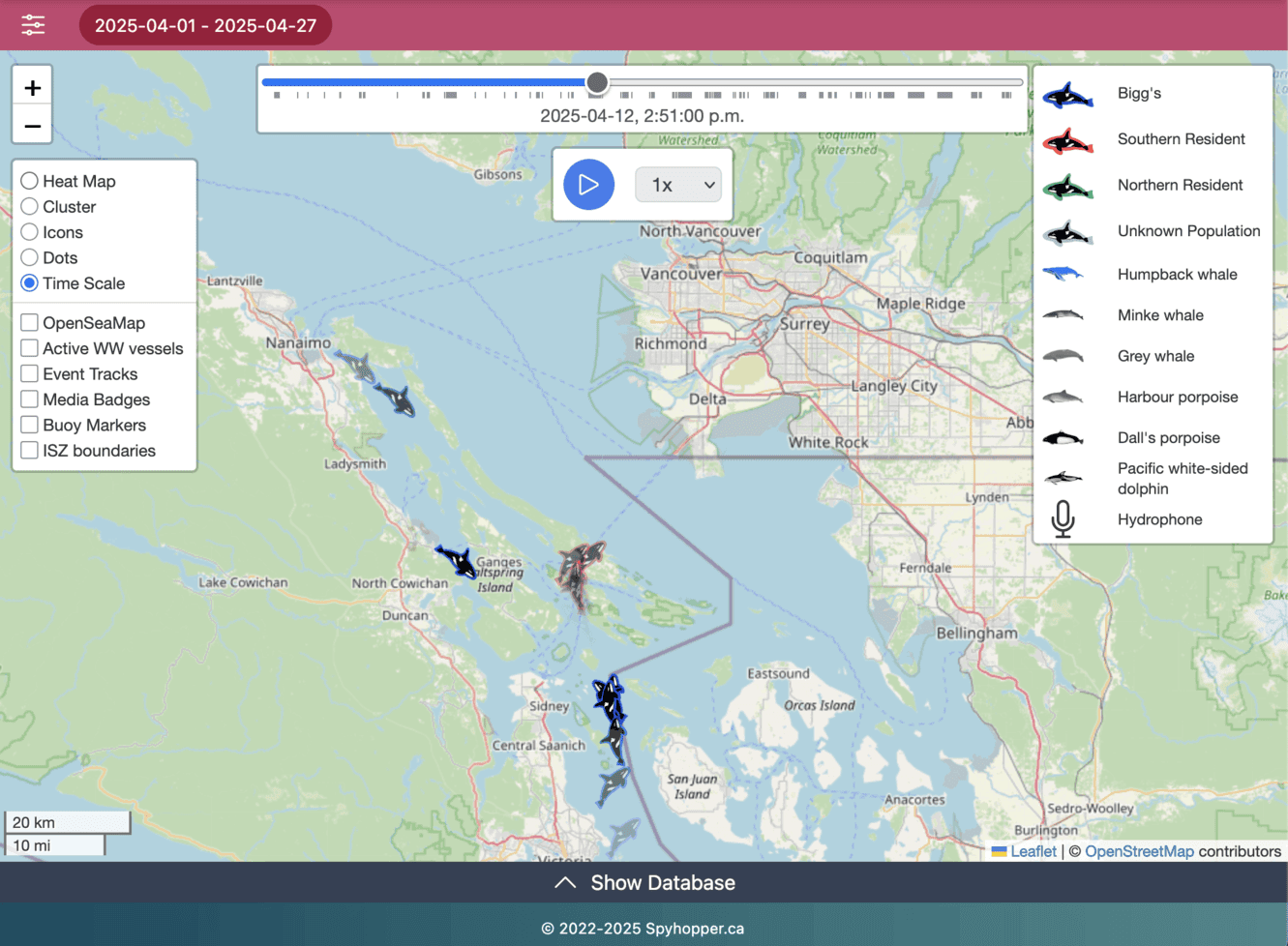community scientists,
whale enthusiasts and
researchers.
Our Mission
Spyhopper is a platform that aggregates detections from citizen scientist groups and researchers in the Salish Sea. It serves as a quick visualization tool to detect trends or for group admins to validate/edit detections. Contributors can share reports, photos, and audio clips, which are combined to create dynamic catalogues. The focus of Spyhopper is to highlight historical sightings to gain insights into how and when whales utilize their habitat. As such, data on Spyhopper is not displayed in real-time and has at least a minimum of a 3-hour delay.
Marine Mammal Detections
The detections displayed on Spyhopper come from a number of sources. Visual sightings come from groups such as the Spyhopper Marine Mammal Research Team (SMMRT), Southern Gulf Islands Whale Sighting Network (SGIWSN), Howe Sound Cetacean Sightings Group (HSCSG), who primarily use the Oceanwise Whale Report App to record sightings. Acoustic detections come from hydrophone systems operated in the Salish Sea by organizations including Saturna Island Marine Research and Education Society (SIMRES) and JASCO Applied Sciences. To learn more about the groups that provide data to Spyhopper, check out the 'About Us' for more details.
Though not all on public display, we currently maintain a database that incorporates marine mammal detections from multiple sources including visual sightings (from multiple citizen scientist groups and researchers), acoustic detections (from sites operated by NGOs and government agencies) and we have the potential to expand to other detection methods. The heatmap shown here is an example of the killer whale detections and tracks in the Salish Sea for 2020-2024 (red lines represent Southern Resident Killer Whales and blue lines represent Bigg's Killer Whales). The concentration of detections reflects the location of where most of the contributors are based.

Data Validation
The Spyhopper Marine Mammal Research Team (SMMRT) is responsible for validating the data on Spyhopper. The SMMRT is a group of researchers who have experience in marine mammal research and are familiar with the species in the area. They are responsible for ensuring that the data is accurate and reliable and the resulting validated data is indicated by a green dot when viewing detections in table form. Understandably, this is a big task so it is common that many detections may have the status of "in progress". We have strict protocols for identification and validation of detections where each species or individual identification has to be confirmed by a minimum of two researchers or trained sighters.
Photo and Audio Galleries
Photographs and audio clips are uploaded to Spyhopper by contributors or by members of the SMMRT. The addition of these media to detections enables a higher level of confidence in the detection and can be used to confirm the presence of a species or individual.
Photographs can be found in the Photo Gallery by navigating to the Photo tabs or by clicking on individual sightings in the Map tab. In the Photo Gallery, you can filter by organization/contributor/location, or by species/population/individual. Photos are tagged by the SMMRT validators when the photographed individual can be confirmed using the Admin only tagging feature.

Audio clips can be found in the Audio Gallery by navigating to the Audio tabs or by clicking on hydrophone icons in the Map tab. The spectrograms are generated as part of the the audio upload procedure. While not all audio detections have linked audio clips, all audio detections on Spyhopper have been validated by the contributing organization or by SMMRT validators.

Map Features
The Map tab is where you can view detections on a map. There are numerous options to customize the map view. As with other tabs, you can make filter selections to refine the data that you want to display. You can click on individual reports for more information on the specific detection and view detection media (if available). The default view is to cluster all detection in the Salish Sea for the current week. Other view options include Icons (without clustering), Dots (an alternative option to icons), Heatmap (colour coded to show the density of detections in an area) and Time scale. Other map features are described below.

Charts
The dynamic chart is a feature where you can play around with the data yourself. As with other features, the data can be refined by adjusting filters such as the date range, location, organization/contributor, or the species/population/individual. There are options for the type of graph (bar, line, scatter), the data to be used on the y axis (whale detections, whale days or hour of detection), x axis (eg day of year, date, year, species etc.) and how the data is grouped (eg by year, month, species etc.). Examples of the charts are shown below.

Contact Us
Have a question, want to collaborate or want to start using Spyhopper as a tool? Reach out to us at spyhoppermmr@gmail.com. Spyhopper is always evolving so if there is something you think should be displayed - let us know.
If you are interested in any of the data that is displayed on Spyhopper, we can share data by request where contributors have given us permission to do so.